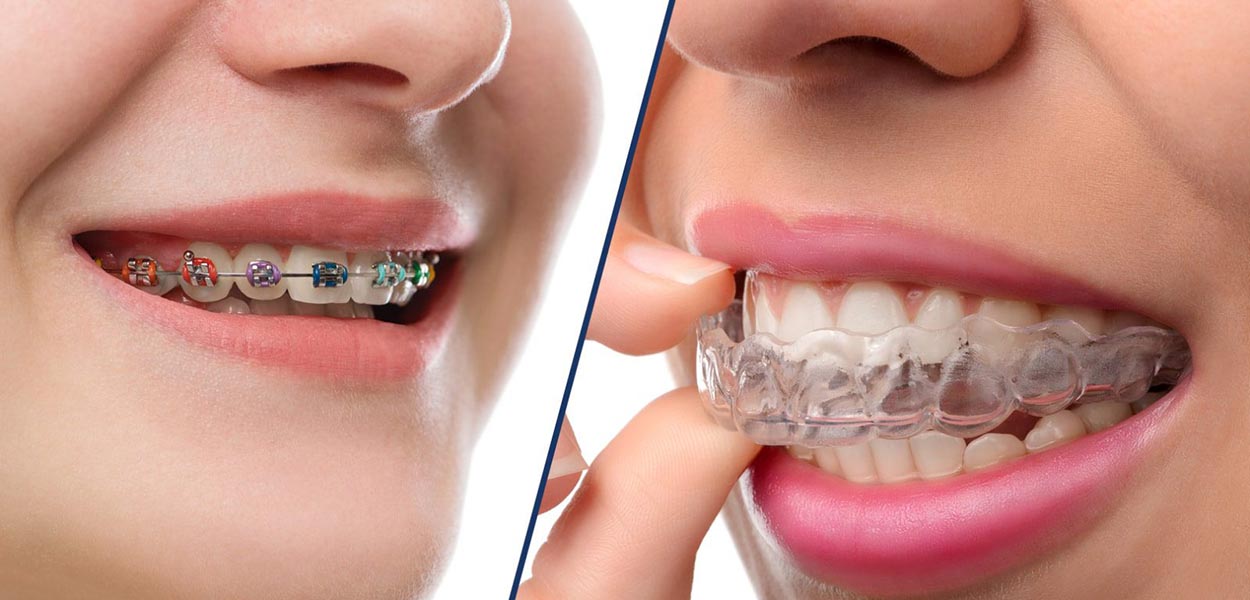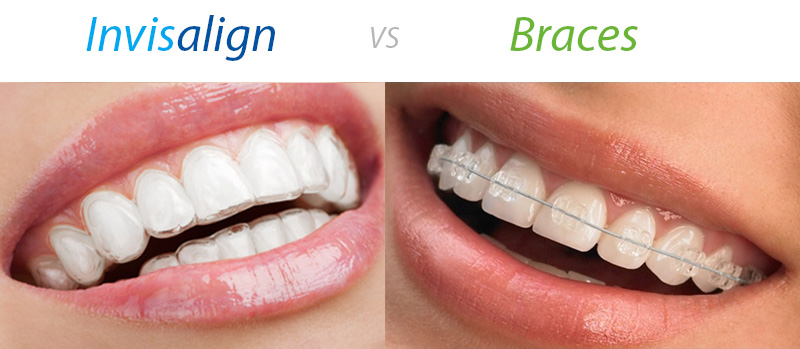Invisalign: The Hidden Facts


Audio Version: Listen to the audio version of this blog post below:
The Limitations of Invisalign
The Invisalign system is alluring to many patients. The subtlety and flexibility of the system makes it especially attractive to adult orthodontic patients. Some adults fear that braces will embarrass them. They believe these clear aligners are the best solution to their imperfect smiles. And sometimes they are. Other times, though, it’s better to go with traditional braces. Invisalign doesn’t solve every orthodontic issue, and in longterm studies, fixed braces prove to keep teeth straighter for longer.
1. Invisalign doesn’t shift teeth from the root.
Orthodontic appliances work by applying force to teeth, which cause them to shift. Fixed appliances like braces use a certain amount of force that allow even the tooth root to be pressurized and see movement. Removable appliances like the Invisalign aligners put more force on the upper part of the tooth, which makes them less effective at shifting teeth from their foundation.
2. Invisalign isn’t for everyone.
You may have heard the phrase “good candidate for Invisalign.” That’s because the system isn’t the best choice for everyone.
The system does work well for milder orthodontic cases, though Invisalign isn’t as effective as traditional braces for more complicated cases. Let’s take a case of buccal occlusion — where a tooth is mispositioned toward the cheek. One study found that not only was Invisalign ineffective for patients with buccal occlusions, in some cases Invisalign worsened the issue. Several types of occlusion, or how your teeth come together, are much better suited to fixed appliance treatments.
This is only the tip of the iceberg for the cases Invisalign cannot fix. Braces, however, can provide much more customization to your unique situation, providing you better treatment and a better smile.
3. Invisalign isn’t that effective, especially in the long run.
Research shows that several years after treatment braces patients show less tooth movement than those who underwent Invisalign treatment. For many undecided patients, this fact usually sells them on fixed braces. Invisalign just doesn’t keep your teeth straight several years after your treatment ends. Why spend the time and money on an option that doesn’t last as long?
Since Invisalign can be removed anytime by the patient, its success relies heavily on patient motivation. For them to be most effective, you’ll have to wear your aligners for 22 hours each day. Removing the aligners or not wearing them often enough will obviously make the treatment less effective and increase the time it takes for the aligners to straighten your teeth. Patients think they’ll like taking their aligners out whenever they want, but fixed braces will create smiles that are perfect for many years to come. Invisalign can’t boast the same longterm results, and we think you should spend your time and money with the more effective solution: braces.
For more information, see the article published in Angle Orthodontist titled Invisalign and Traditional Orthodontic Treatment Postretention Outcomes Compared Using the American Board of Orthodontics Objective Grading System.
4. All research indicates Invisalign Aligners only reaches 59 percent of your planned goals.
A research article published in BioMed Central Oral Health showed that Invisalign was only about 59 percent effective. The accuracy of certain tooth movements, such as the upper incisor torque and the premolar derotation, were less than 50 percent effective.
5. Invisalign traps food and bacteria.
Many people assume since Invisalign is removable that it’s also better for your oral health. That isn’t totally true. A recent article in the Journal of Clinical Orthodontics examined oral hygiene during aligner therapy. Researchers have discovered that many patients drink beverages with their aligners still in, which traps sugars and bacteria in the mouth. Saliva’s job is to help clean the teeth and gums. When your teeth are stuck in your aligners, you don’t get the benefits of the body’s natural tooth cleaning system: saliva.
Invisalign can essentially trap food and bacteria in the teeth if you aren’t diligent.
6. Invisalign is intermittent.
With Invisalign, you have to refuel every two weeks. The frequency of new aligners can surely be a hassle, and these frequent changes can cause even more soreness in your mouth, which brings us to our next point. Discomfort lasts for about 3 days each time you change aligners.
7. Invisalign may be more painful than braces.
Some patients believe that Invisalign is less painful than braces, though one study has shown that this is only slightly true at the beginning of treatment. Over time, Invisalign patients and braces patients both experience mild increases in pain when switching aligners or adjusting braces respectively. The truth is that you can’t achieve a straighter, healthier smile without some discomfort. Your teeth are moving, which makes them temporarily more sensitive. There’s no way to get around that sensitivity. With an ibuprofen and soft foods, the discomfort is a small price to pay for a stunning smile.
For more information on this, see the Long-Term Comparison of Treatment Impacts Between Invisalign and Fixed Treatment Therapy.
8. Many times refinements are needed after Invisalign treatment has begun.
You’ve visited the orthodontist, taken molds of your mouth, and set a treatment plan. But with Invisalign, it’s common for your plan to change, and maybe even change again. Often multiple refinements are needed as you undergo Invisalign treatment. Braces can offer a more steady treatment with fewer surprises.
In many cases, Invisalign is ineffective. You’d be better off choosing fixed braces for longterm alignment, and many orthodontists now offer fixed braces that are clear and very nearly invisible. Clear brackets and wires are subtle and stylish, and their stability and effectiveness will give you a longer-lasting smile than Invisalign. The best choice for tooth alignment is to have your orthodontist do a thorough diagnosis of your unique smile.


